
Published:
Readtime: 8 min
Every product is carefully selected by our editors and experts. If you buy from a link, we may earn a commission. Learn more. For more information on how we test products, click here.
- Cayenne Turbo Electric delivers 850 kW, 1,500 Nm and a 2.5-second sprint.
- The entry model offers 300 kW and a WLTP range of up to 642 km.
- Turbo Electric hits 0–200 km/h in just 7.4 seconds.
- 113 kWh battery enables 390–400 kW DC charging capability.
- Australian arrivals are expected to begin in Q3 2026, with prices starting from $167,800.
The 850 kW (1,156 PS) and 1,500 Nm Porsche Cayenne Electric has been revealed. Expected to arrive in Australia from Q3 2026, the entry-level Cayenne Electric will be priced from AUD$167,800 before on-road costs with 300kW (408PS) of power and a WLTP range of up to 642 km. If you want it all, the range-topping Cayenne Turbo Electric model starts at AUD$259,900 before on-road costs and can accelerate from 0 to 100 km/h in 2.5 seconds.
The news of the new Cayenne Electric arrives months after Porsche CEO Dr Oliver Blume announced that the company would significantly roll back its electric vehicle strategy. Today, Matthias Becker, Member of the Board of Management for Sales and Marketing, confirmed that the Cayenne Electric does not signal the end of combustion models, but rather a choice for buyers. “With the electrification of the Cayenne, we are reaching a new level of performance that sets standards for the future,” he said. “We will continue to develop the Cayenne with efficient combustion and hybrid drive systems well into the next decade.”
It seems no coincidence then that Porsche has incorporated the “Electric” moniker into the new Cayenne model, unlike the Macan, which has now replaced the petrol model in Australia. It continues to sell quite well for an EV, but has struggled overall, with sales down -61.0% in September 2025 and -63.2% in October 2025. Becker confirms that this combustion, PHEV, and EV strategy will be applied to every model moving forward. “Every segment in which we are represented, customers will in future have the choice between fully electric and combustion-engined powertrains.”
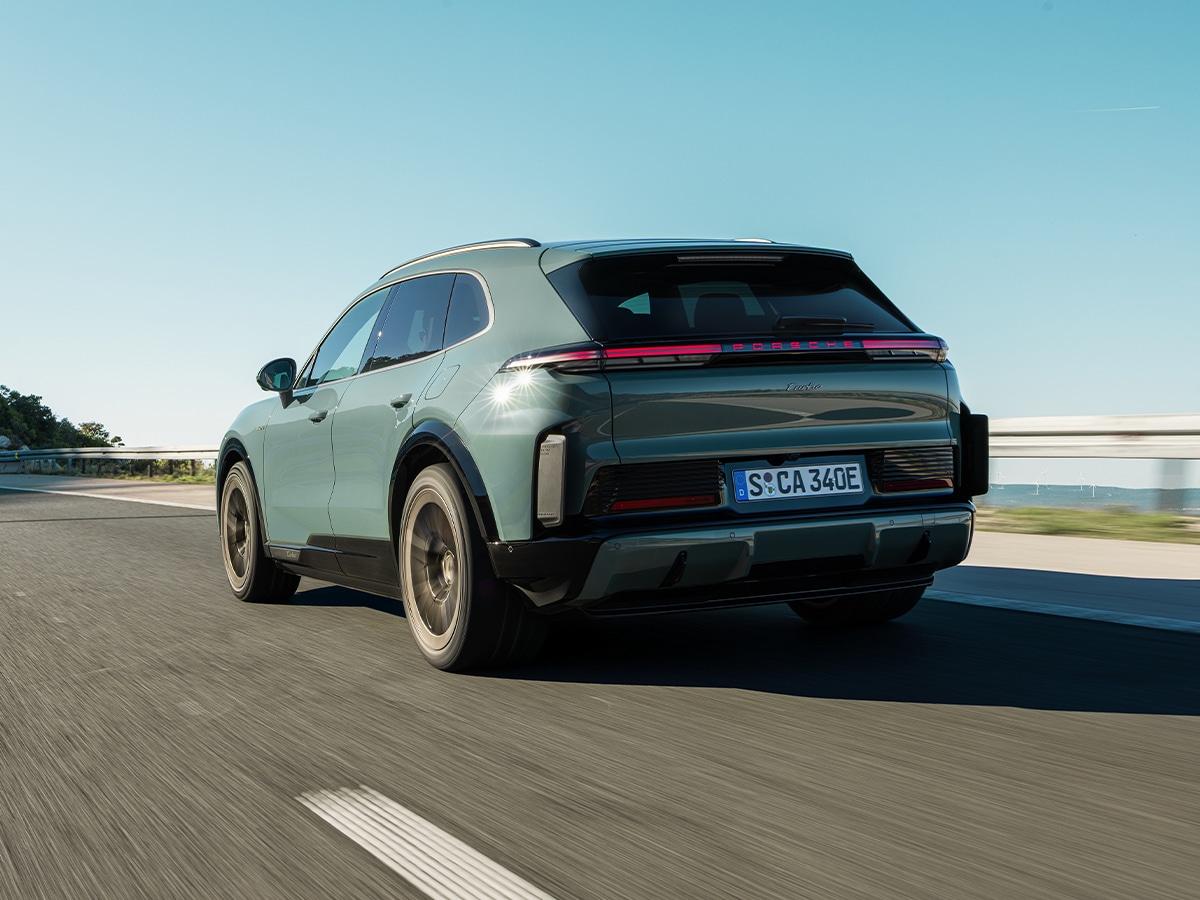
Power and Performance
There will be two Cayenne Electric models at launch:
- Porsche Cayenne Electric
- Porsche Cayenne Turbo Electric
Both models feature dual electric motors, electronic Porsche Traction Management (ePTM), and are rapid and agile for their size. The entry model can complete the 0–100 km/h sprint in 4.8 seconds, before reaching a top speed of 230 km/h. It produces 300 kW (408 PS) of power in normal mode, but it can increase that power to 325 kW (442 PS) with Launch Control activated.
However, what we’re excited about is the Cayenne Turbo Electric, which completes the 0-100 km/h sprint in 2.5 seconds, the same time as the latest generation Porsche 911 Turbo S.
The Turbo Electric produces up to 850 kW (1,156 PS) and 1,500 Nm of torque with Launch Control. Yes, that makes it quick to the speed limit, but keep your foot down and you’ll reach 0-200 km/h in 7.4 seconds (about one second quicker than the aforementioned Turbo S). Driving around normally, the dual electric motor drivetrain produces 630 kW (857 PS), and Porsche’s Push-to-Pass technology adds 130 kW (176 PS) for 10 seconds. Finally, the top speed is electronically limited to 260 km/h.
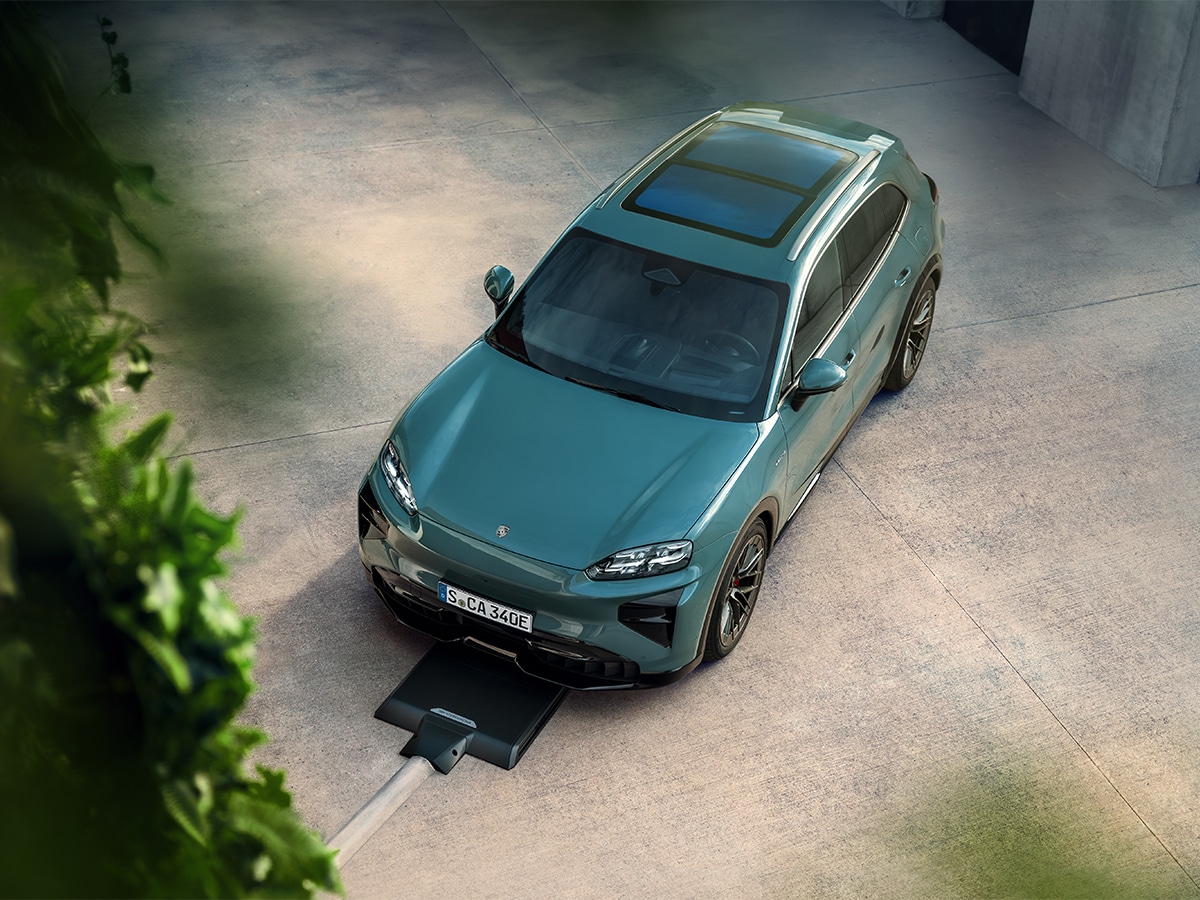
Charging and Battery
The Cayenne Electric is based on 800-volt architecture and houses a massive 113 kWh high-voltage battery, equipped with double-sided cooling for optimal thermal management.
With a slippery design (drag coefficient 0.25) the EV SUV is capable of delivering up to 642 km of range in the entry-level Cayenne Electric and up to 623 km of range in the Cayenne Turbo Electric. How big is that battery? Well, it’s not as big as those found in EV pick-up trucks in the U.S., but it’s almost twice the size of the battery you’ll find in popular EVs like the Tesla Model Y standard range.
The downside of large batteries is the time it takes to charge them, but being an 800V system, the Cayenne Electric has top-notch DC charging capability, including:
- Up to 390 kW standard.
- Up to 400 kW under specific conditions.
If you can find an EV charger that can output that speed, which is rare in Australia, that means a 10–80% charge in under 16 minutes.
When you want convenience at home, which most Cayenne owners do, this is the first Porsche to offer optional inductive wireless charging (up to 11 kW) using a floor plate. Australian-delivered models are pre-wired for wireless charging hardware retrofitting upon arrival from Q4 2026. We’ve covered this technology previously, and the car aligns itself with the charging pad automatically.
Lastly, one of the more significant innovations with the new Cayenne Electric is in regenerative braking. Porsche says 97% of braking can be handled by electric motors in daily driving, and the vehicle can generate up to 600 kW of power while doing so.
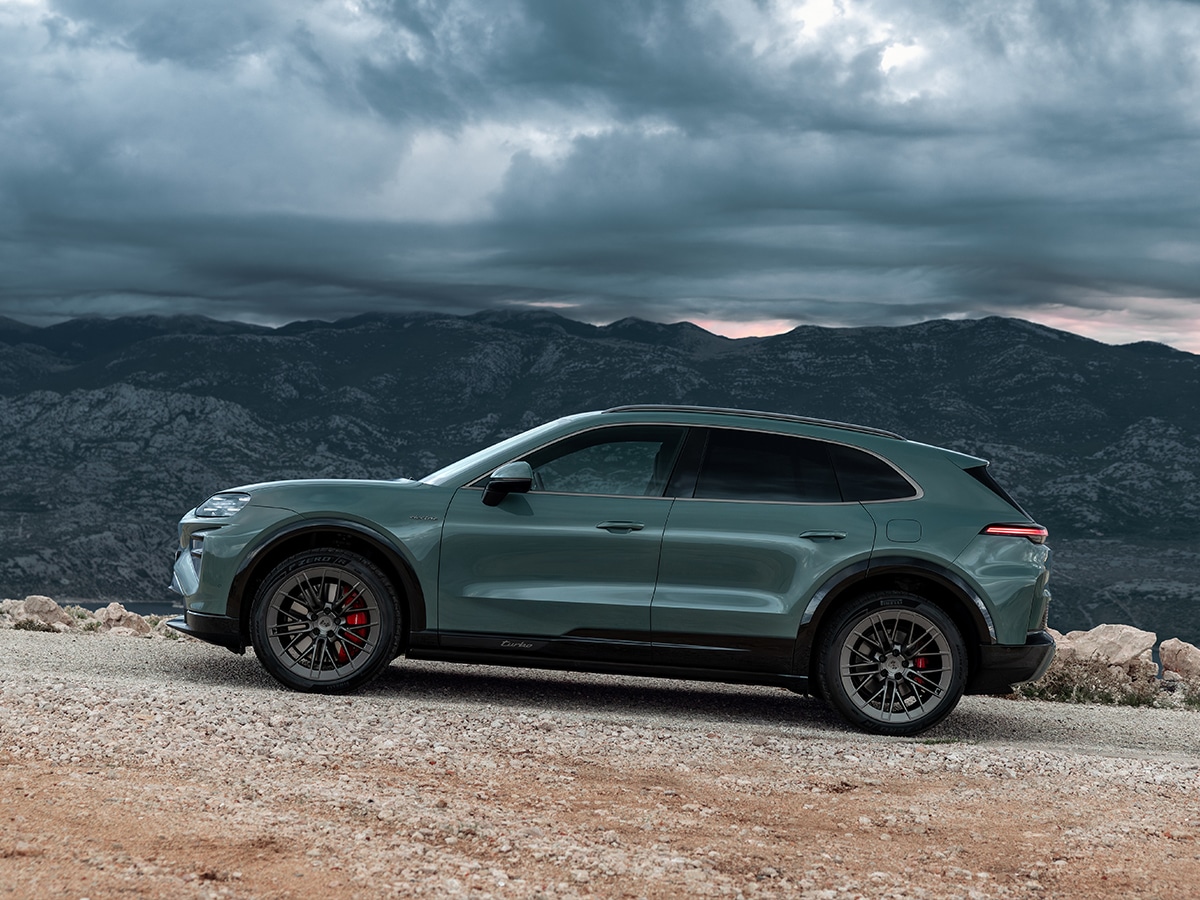
Chassis, Handling and Dynamics
It’s quick, but how does it handle? Porsche has thrown everything and the kitchen sink at the new Cayenne to ensure it drives like one.
There’s standard adaptive air suspension with Porsche Active Suspension Management (PASM), which is the best in the industry. However, the Turbo Electric goes one step further in an effort to increase driver engagement by adding Porsche Torque Vectoring Plus (PTV Plus) with a limited-slip rear differential. This, combined with rear-axle steering (optional on both models), adds agility to the 4,985 mm (+55 mm) long vehicle.
It’s also 1,980 mm wide, so expect it to feel large on the road. However, the low centre of gravity provided by the large battery should also be aided by its relatively short 1,674 mm height.
What owners will be most impressed by is Porsche Active Ride, which is available for the first time on the Cayenne in this electric form. We recently tested this new technology in a Porsche Panamera Turbo E-Hybrid, and quite simply, it’s the most impressive piece of suspension technology in any car right now. Without delving into the details, it can hold the Cayenne completely flat through corners, and in the Panamera, it actually leaned into the corner. Must try!
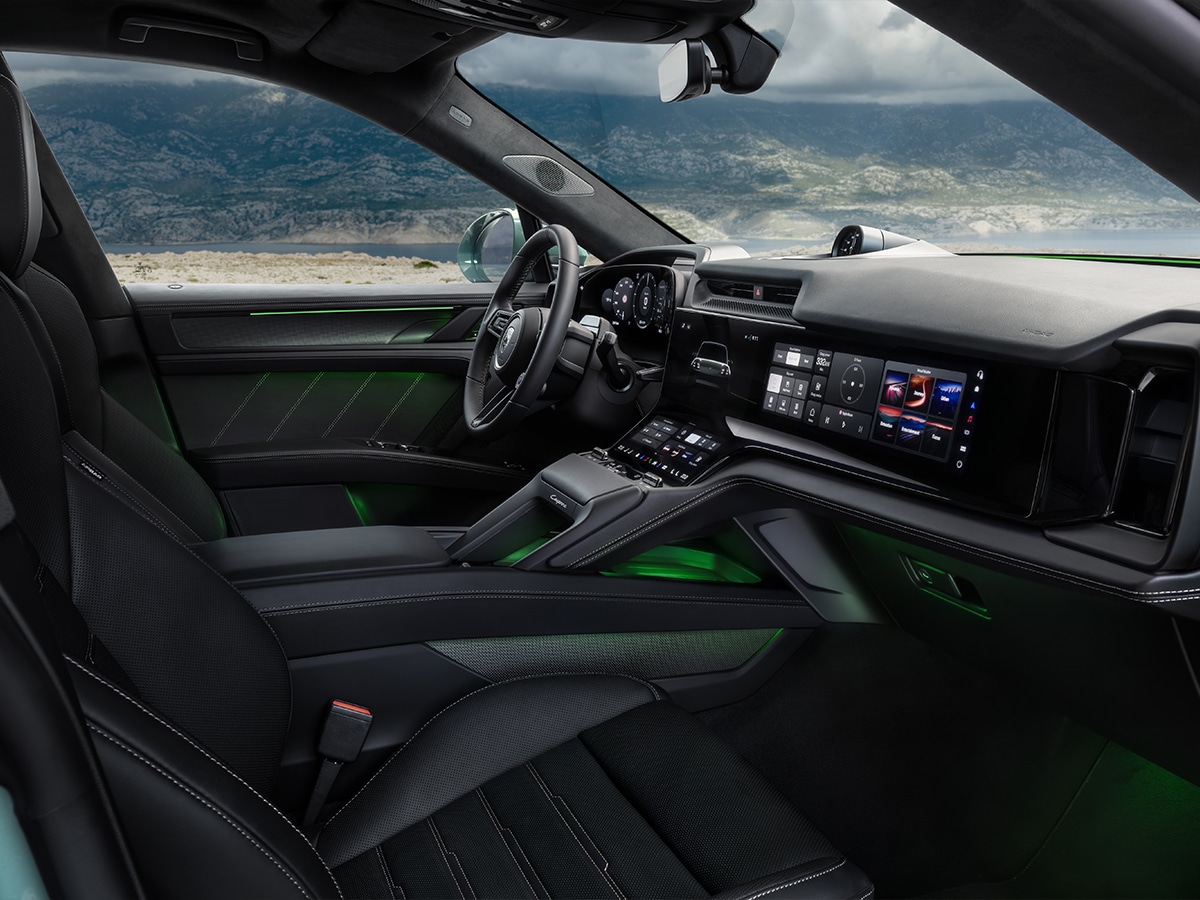
Practicality, Comfort, and Technology
That’s a curved OLED panel you’re looking at in the middle of the dashboard, extending down to the centre console, where the “Ferry Pad” wrist pad is positioned to help control the touchscreen while driving. It’s joined by a 14.25-inch OLED instrument cluster in front of the driver, an AR head-up display projecting an 87-inch equivalent image 10 m ahead of the driver, and an optional 14.9-inch passenger display.
Of course, it wouldn’t be a new car release without iPad-like levels of technology, including the new Porsche Digital Interaction design language with:
- Widget-based access.
- Themes app for displaying colour schemes.
- Third-party apps via Porsche App Centre.
- New streaming and gaming functions.
It’s combined with a new AI-driven voice pilot that understands complex or contextual queries, enables intuitive navigation commands, and provides access to online knowledge.
Comfort-wise, the wheelbase has increased to 3,023 mm (+13 mm), which has resulted in increased rear legroom. A standard electrically adjustable seat system with comfort-to-cargo adjustments is also available. Behind the rear passengers is a large boot measuring 781–1,588 litres, depending on seat configuration, and you also gain a 90-litre front trunk.
The front seat passengers have heated armrests, seats, and more. The most notable addition here is “Mood Modes,” which make their debut in a Porsche, adjusting seating, lighting, climate, sound, and display appearance.
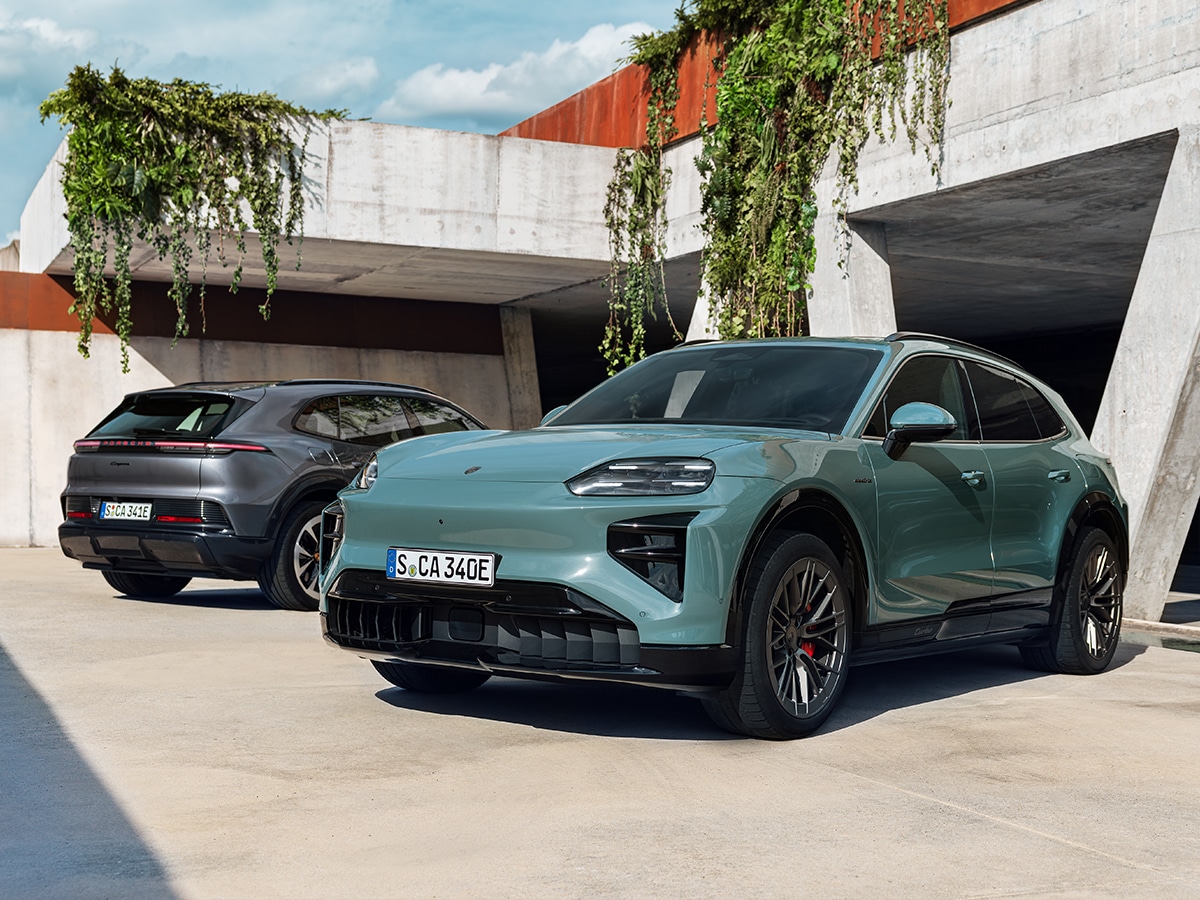
Price and Availability
Here’s how much the Porsche Cayenne Electric costs in Australia:
- Cayenne Electric – from AUD$167,800 plus on-road costs.
- Cayenne Turbo Electric – from AUD$259,900 plus on-road costs.
If you like what you see, the Cayenne Electric is available to order now, and you should expect to see it in your driveway from Q3 2026.
It’s the most customisable Cayenne ever, and you can choose from 13 exterior colours, nine wheel options (20–22 inch), 12 interior combinations, five interior packages, five accent packages, and of course, if you don’t find something that fits your fancy, the expanded Porsche Exclusive Manufaktur options include Paint to Sample and Sonderwunsch one-off builds, even Porsche Design custom timepieces now extend to Cayenne buyers.
Finally, here in Australia, we get additional specifications, including:
Cayenne Electric Standard Specs
- Tyre fit set
- Privacy glass
- Parking Entry Package
- Surround View
- Self-Steering ParkAssist
- Digital radio
- Exterior colour up to and including the ‘Dreams’ range as No-Cost Options (NCO)
- 14-way electric comfort seats with memory package
Cayenne Turbo Electric (adds)
- Exterior colour up to and including the ‘Dreams’ range already NCO
- 14-way electric comfort seats with memory package (listed as NCO for Turbo)
- Panoramic roof system
- Seat ventilation (front)
- Four-zone automatic climate control
“The Cayenne Electric shows performance in a completely new dimension, with innovative technologies that we have developed in motorsport. It sets new standards in the SUV segment – in terms of driving characteristics as well as charging,” said Oliver Blume, Chairman of the Executive Board of Porsche AG. “Outstanding electric performance meets very real everyday usability. Excellent long-distance comfort combines with uncompromising off-road capability.”
For more information, please visit the official Porsche website, linked below.
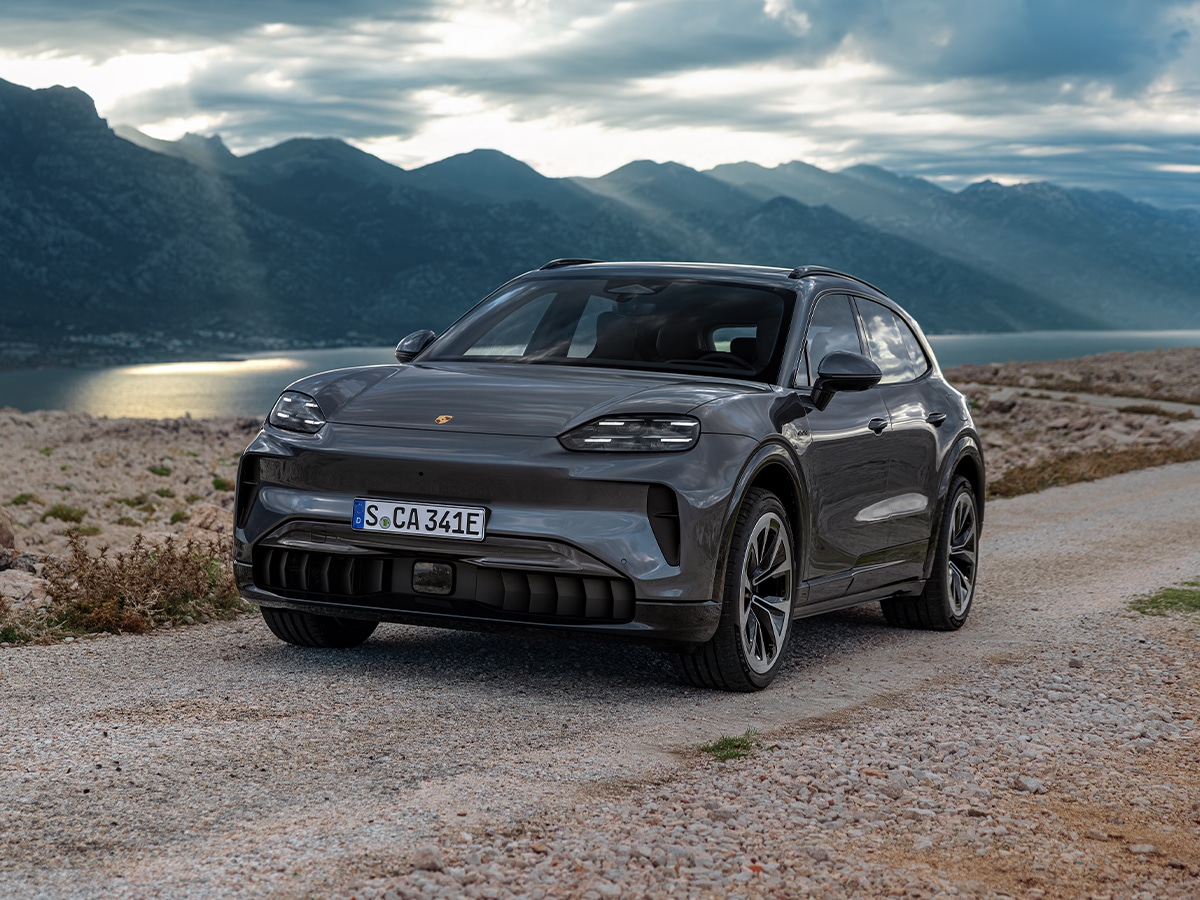
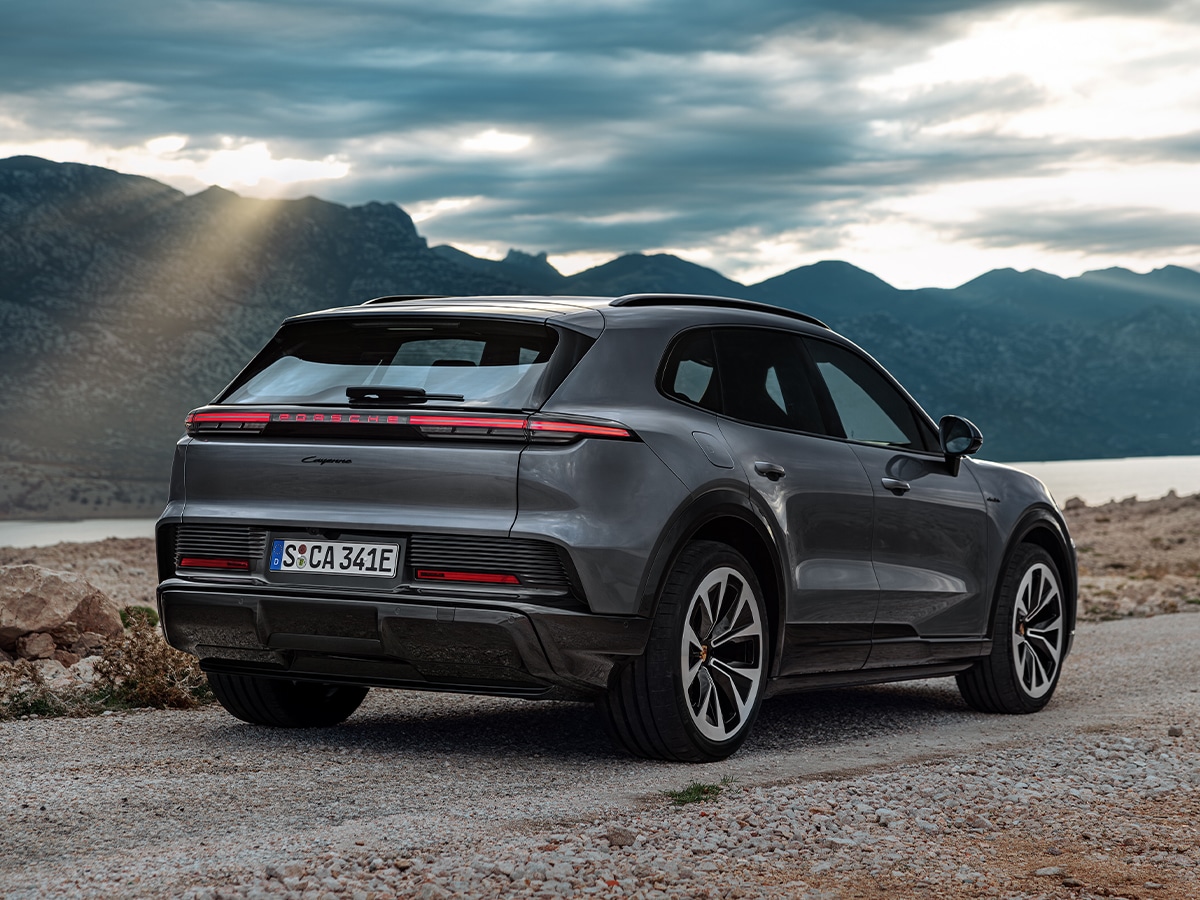
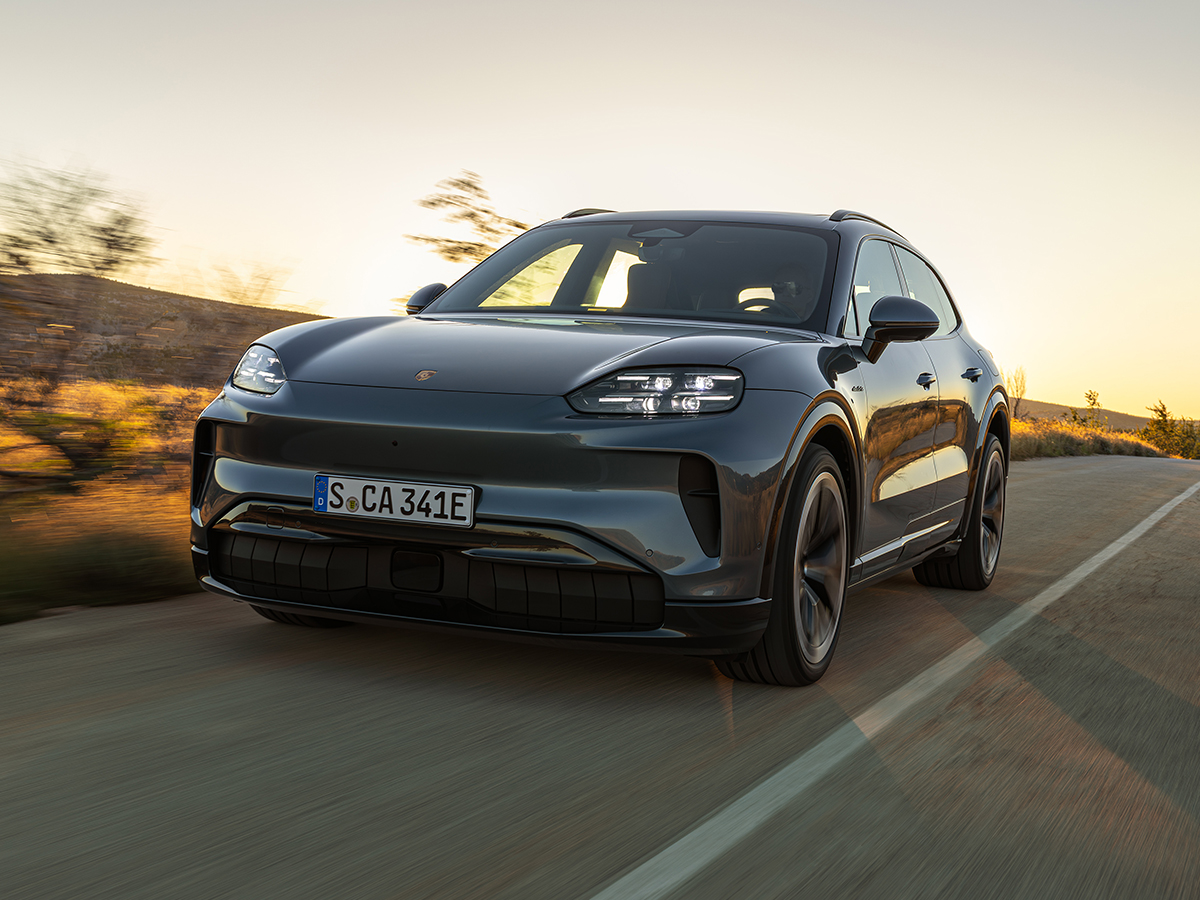

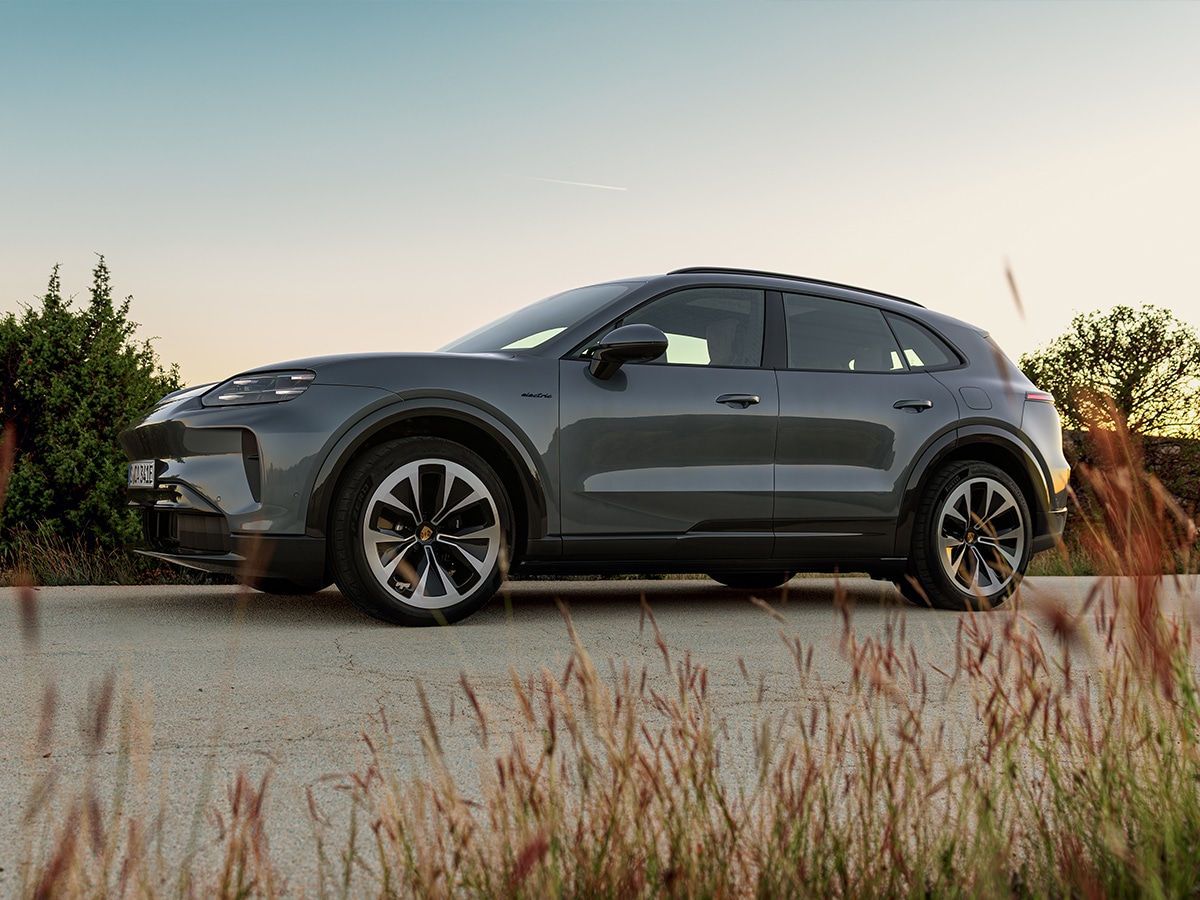
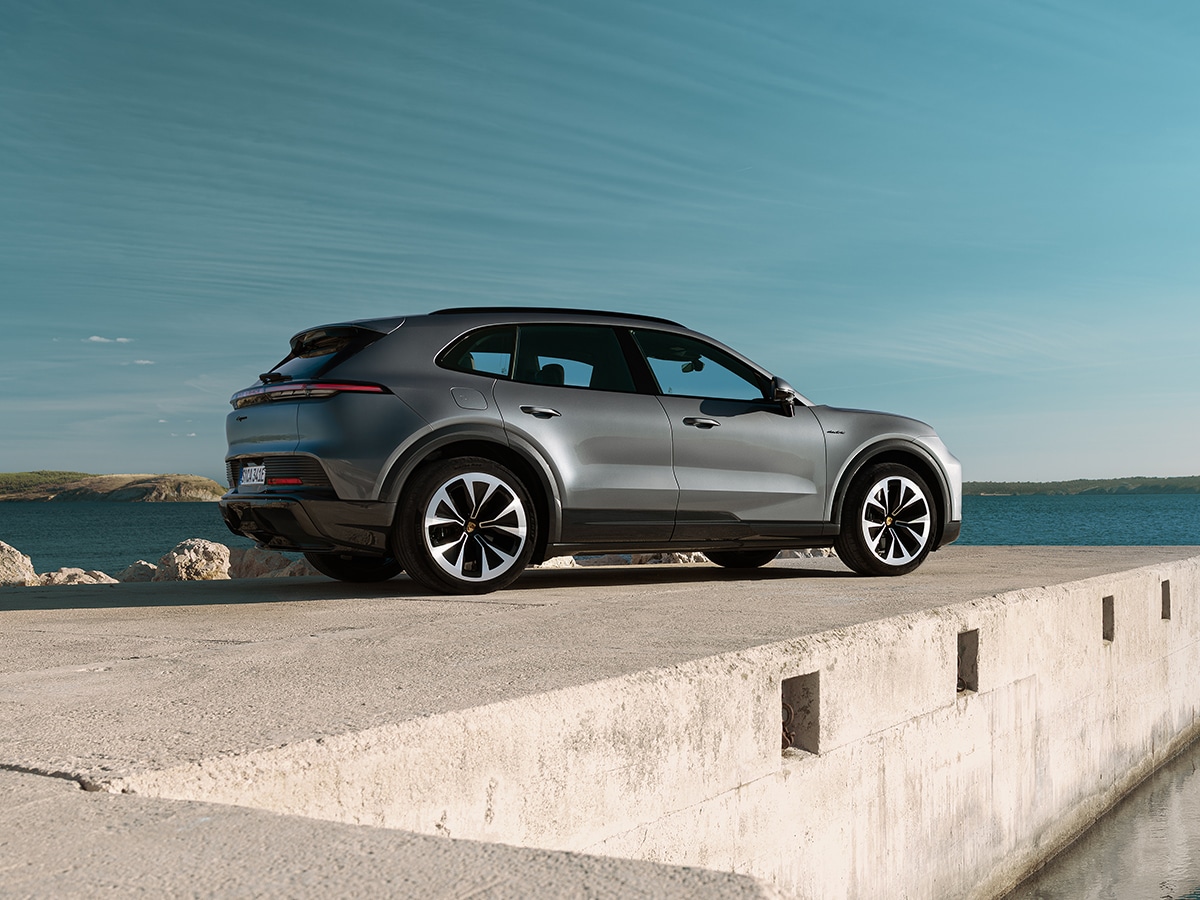


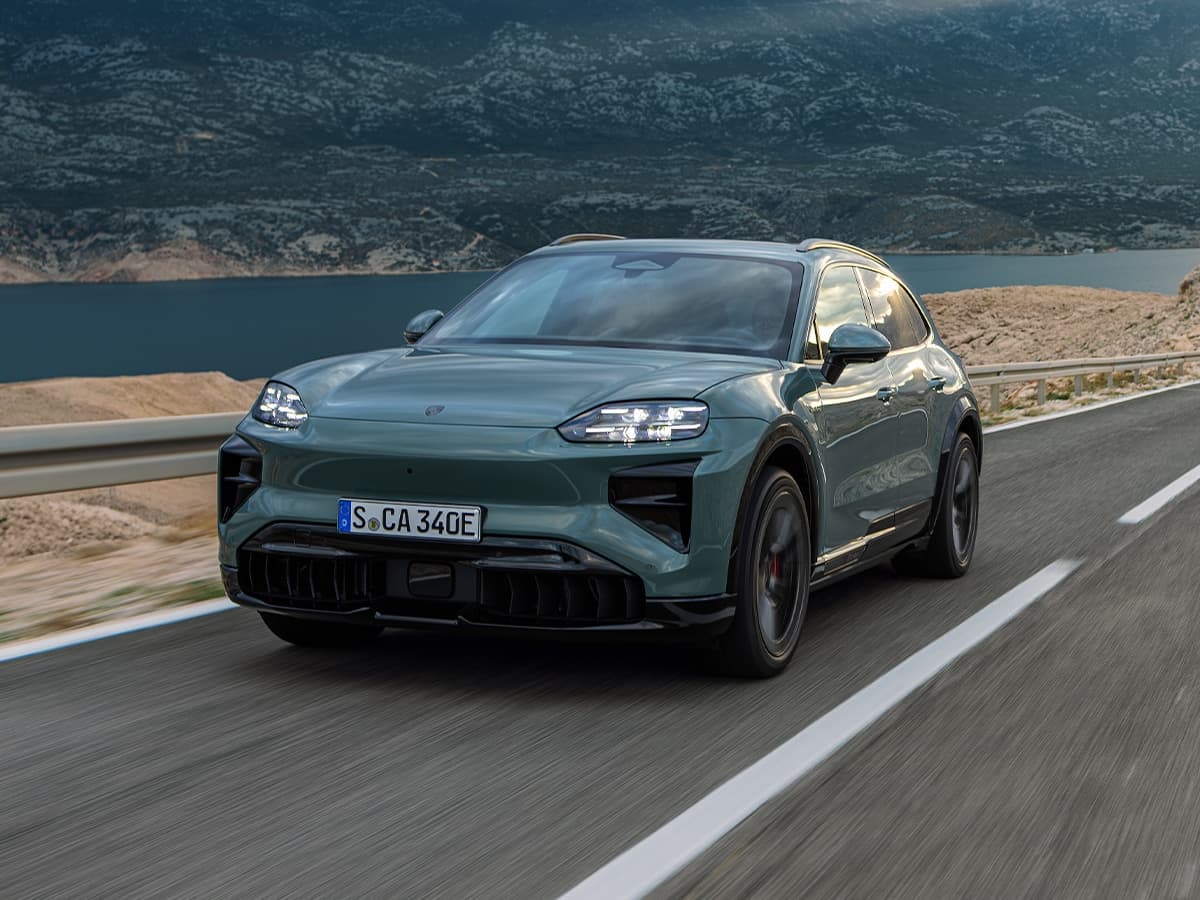
















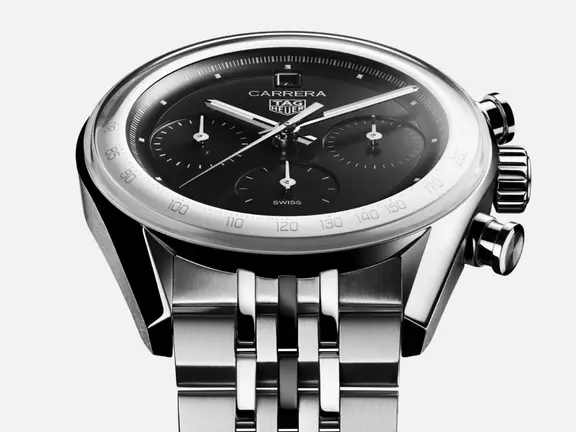














Comments
We love hearing from you. or to leave a comment.